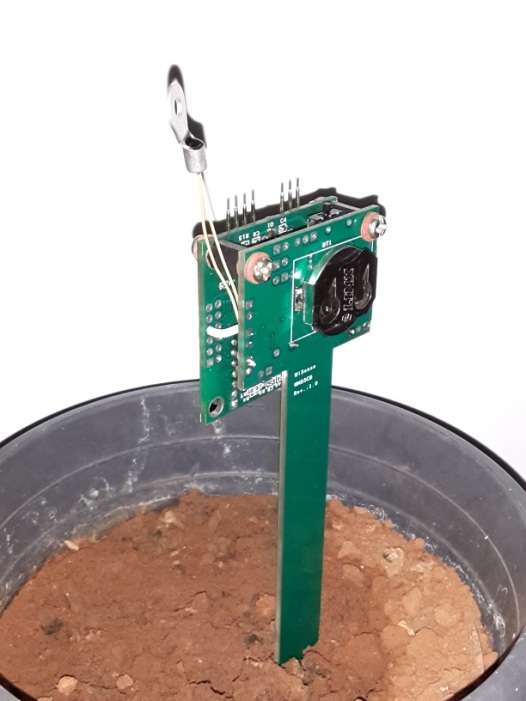Blog Archives
WSN1120L Range Test
We did a quick range test of our new CC1120 radio based sensor nodes. We did this within Pruksa (community in east Bangalore). This was a non line of sight test in which one WSN1120L node was configured to send packets to a coordinator node (a WSN1120CL) once every second. The nodes were around 526 meters apart with lots of houses in between. The nodes were at a height of around 5 feet above ground. The walls in these houses are fully concrete (no bricks). Even at this distance the signal strength was pretty good (around -75 dBm). The nodes were configured to transmit at +14 dBm at a data rate of 1.2 kbps (GFSK modulation) with channel bandwidth configured to 25 kHz.

Map showing location of non-LOS range test
We tried to do a line of sight test along a nearby highway but we could not find a flat stretch longer than 1.1 kilometers close by. The two nodes were able to communicate up to a distance of 1.1 kilometers. The signal strength was again very good (around -80 dBm). We will be doing further tests to find out the max range under line of sight and non line of sight conditions.
Here is a pic of one of the nodes used in the range test. The node was powered by two AA batteries.

WSN1120L Sensor Node
For more information, please visit wisense.in.
Wireless soil moisture sensor
We will soon be introducing our first consumer IOT product – a wireless soil moisture sensor for your plants. The soil moisture sensor is based on the open source “Chirp” plant watering alarm. We added an NTC thermistor to the same PCB. The sensor PCB is interfaced to the WSN1101L sub-GHz wireless node. The soil moisture sensor is a capacitive sensor. When water is added to the soil (in the vicinity of the sensor probe), the capacitance of the probe increases. When the soil looses moisture, the probe’s capacitance decreases. The MSP430 on the WSN1101L is used to generate a square wave (around 330 kHz) which is fed to a low pass filter created by a 10 kilo-ohms resistor and the capacitance of the soil moisture probe. The output of this low pass filter is rectified using a diode and the average level of the filtered square wave is measured using one of the 10 bit ADC channels on the MSP430. As the capacitance of the probe increases (when water is added), the output voltage decreases. As the soil dries out, the probe capacitance decreases and the output voltage increases. Note that capacitance increases when water is added because water serves as a dielectric. Higher the dielectric constant, higher the capacitance.
The sensor PCB has a coin cell holder which can hold a 20 mm coin cell (CR-2032 for instance). This sensor node can run on the CR-2032. If the sensor measures and reports the sensor readings say once every 30 minutes (or more), the coin cell can last more than a year.
This product will be an open system. We intend to allow users to add more sensors to the product. We are going to make the source code available so that anyone can add sensors or modify any layer of the stack. The MSP430 on the WSN1101L can be programmed through the 2 pin spy-bi-wire interface using a low cost launchpad (MSP-EXP430F5529LP) from TI. Note that the MSP430 variant on the WSN1101L is the MSP430G2955. All the MSP430 pins will be exposed. Add new sensors, replace existing sensors, modify/add any part of the firmware or just completely re-purpose the system.
Here are some pics.
The WSN1101L has a U.FL connector.


